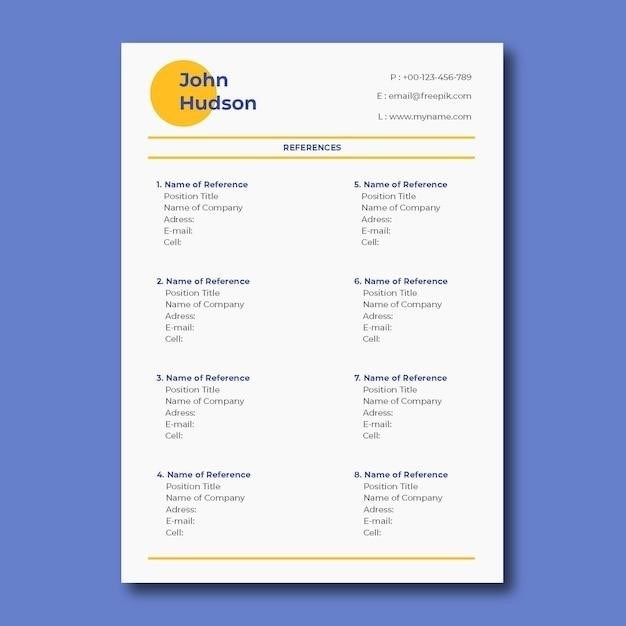jack and the beanstalk book pdf
Jack and the Beanstalk⁚ A Classic Tale in PDF Format
Looking for a classic tale to share with your children? “Jack and the Beanstalk” is a timeless story that’s perfect for reading aloud or enjoying together as a family. Fortunately‚ there are many versions of this beloved fairy tale available in PDF format‚ making it easy to access and share. From free downloads to illustrated editions‚ there’s a perfect PDF for every reader‚ young and old.
Introduction
The tale of Jack and the Beanstalk is a beloved classic that has captivated generations of readers. The story of a young boy who trades a cow for magic beans‚ only to discover a giant’s castle hidden in the clouds‚ is a timeless adventure filled with wonder and excitement. Whether you’re looking for a charming bedtime story for your children‚ a nostalgic trip down memory lane‚ or simply a captivating read‚ “Jack and the Beanstalk” offers something for everyone. With its simple yet powerful narrative‚ this fairy tale explores themes of greed‚ courage‚ and the importance of family‚ making it a relevant and engaging story for readers of all ages. The availability of “Jack and the Beanstalk” in PDF format offers a convenient and accessible way to enjoy this classic tale. Whether you choose a free download or a beautifully illustrated edition‚ a PDF version of “Jack and the Beanstalk” provides a unique opportunity to experience this cherished story in a digital format.
The Story of Jack and the Beanstalk
The story of Jack and the Beanstalk follows the adventures of a young boy named Jack who lives with his impoverished mother. One day‚ Jack is sent to market to sell their cow‚ Milky-White. Along the way‚ he encounters a mysterious man who offers him a handful of magic beans in exchange for the cow. Despite his mother’s warnings‚ Jack accepts the deal and rushes home. When his mother discovers what he has done‚ she throws the beans out of the window in anger. But to their astonishment‚ the beans sprout overnight into a giant beanstalk that stretches high into the sky. Driven by curiosity‚ Jack climbs the beanstalk and finds himself in a magical world. He arrives at the castle of a giant who lives on a diet of children and a golden goose. Jack cleverly outwits the giant and steals his treasures‚ including the goose‚ before escaping down the beanstalk. The giant‚ enraged by the theft‚ chases Jack down the beanstalk and attempts to climb down. To prevent the giant from reaching him‚ Jack cuts down the beanstalk‚ sending the giant plummeting to his doom. With the giant gone‚ Jack and his mother are free to enjoy the treasures he has brought back from the giant’s castle‚ living happily ever after.
The Origins of the Tale
While the exact origins of “Jack and the Beanstalk” remain shrouded in mystery‚ the story has been traced back to ancient folklore and mythology. Elements of the tale can be found in various cultures around the world‚ suggesting a long and complex history. One possible source is the Celtic myth of the “Bean-Nighe‚” a female spirit who washes clothes in a river and uses a magic bean to determine the fate of those she encounters. Another potential influence is the Germanic legend of the “Giant of the Mountain‚” a fearsome creature who lives in a remote castle and terrorizes the surrounding countryside. The motif of a magical beanstalk that leads to a hidden world is also present in various folk tales‚ including the Norse myth of “Yggdrasil‚” the world tree that connects the nine realms of Norse cosmology. It’s likely that “Jack and the Beanstalk” evolved over time‚ incorporating elements from different cultures and traditions‚ ultimately shaping the story we know and love today.
Variations and Adaptations
As with many classic fairy tales‚ “Jack and the Beanstalk” has been retold and reimagined countless times‚ giving rise to various adaptations and variations. Some versions introduce new characters‚ such as the “Dame Trott‚” Jack’s mischievous mother‚ who often plays a more prominent role in the story. Others explore different themes and motivations‚ focusing on the moral implications of Jack’s actions‚ the dangers of greed‚ or the importance of resourcefulness. In some versions‚ the giant is not simply a villain but a tragic figure‚ driven to desperation by the loss of his possessions. The ending of the tale has also undergone numerous transformations‚ with some versions depicting a more satisfying resolution for Jack and his mother‚ while others maintain the original ambiguity and leave the reader to ponder the consequences of Jack’s actions. These adaptations and variations reflect the ongoing evolution of the story‚ ensuring that “Jack and the Beanstalk” remains a relevant and engaging tale for audiences of all ages.
The Themes of Jack and the Beanstalk
At its core‚ “Jack and the Beanstalk” explores timeless themes that resonate with readers of all ages. The story delves into the dangers of greed and the importance of resourcefulness‚ as Jack’s initial decision to sell the cow for magic beans‚ driven by a desire for quick wealth‚ leads to both adventure and peril. The tale also highlights the power of courage and determination‚ as Jack faces his fears and outsmarts the giant to protect himself and his family. Furthermore‚ the story touches upon the complex relationship between humans and nature‚ as Jack’s actions have unintended consequences‚ ultimately leading to the destruction of the beanstalk and the giant’s demise. The themes of right and wrong‚ the consequences of our choices‚ and the importance of family are also interwoven throughout the narrative‚ making “Jack and the Beanstalk” a rich and engaging story that sparks reflection and discussion.
Jack and the Beanstalk in Popular Culture
The enduring popularity of “Jack and the Beanstalk” is evident in its frequent appearances in various forms of popular culture. From stage productions and animated films to television shows and video games‚ the story continues to captivate audiences of all ages. The iconic giant‚ the magical beanstalk‚ and the memorable phrase “Fee-fi-fo-fum” have become ingrained in our collective consciousness‚ inspiring countless adaptations and interpretations. For example‚ the 1952 animated film “Jack and the Beanstalk” by the Fleischer Studios is a beloved classic‚ while the musical stage production “Jack and the Beanstalk” by the Chicago Kids Company offers a contemporary twist on the traditional tale. The story’s enduring appeal lies in its ability to transcend time and cultures‚ resonating with audiences across generations and providing a constant source of entertainment and inspiration.
Finding Jack and the Beanstalk PDFs
In today’s digital age‚ finding a PDF version of “Jack and the Beanstalk” is a simple task. A quick search on the internet will yield a multitude of options‚ catering to different preferences and needs. Websites like Project Gutenberg and Free Kids Books offer free downloads of classic fairy tales‚ including “Jack and the Beanstalk.” These websites provide a convenient and accessible way to access the story without any cost. For those seeking a more visually engaging experience‚ illustrated PDFs can be found on websites like Amazon and Barnes & Noble‚ offering beautifully designed versions with vibrant illustrations to capture the imagination of young readers. Educational PDFs‚ often accompanied by activities and quizzes‚ are also available‚ providing an interactive and engaging learning experience for children. With the wide availability of “Jack and the Beanstalk” in PDF format‚ it’s easier than ever to enjoy this timeless tale in a convenient and versatile format.
Free PDF Downloads
For those seeking a budget-friendly option‚ numerous websites offer free PDF downloads of “Jack and the Beanstalk.” Project Gutenberg‚ a renowned digital library of public domain works‚ provides a classic version of the tale‚ accessible for free. Free Kids Books is another valuable resource‚ offering a wide selection of free children’s books‚ including “Jack and the Beanstalk‚” in PDF format. These websites are ideal for parents and educators looking for high-quality‚ free versions of beloved stories for children. The availability of free PDFs ensures that everyone can access and enjoy this classic tale‚ regardless of their budget. Whether for personal reading or for use in educational settings‚ free PDF downloads provide a convenient and cost-effective way to experience “Jack and the Beanstalk.”
Illustrated PDFs for Children
For children‚ “Jack and the Beanstalk” is not just a story‚ it’s an adventure. Illustrated PDFs bring the tale to life with vibrant colors‚ captivating characters‚ and engaging imagery. These PDFs are designed to capture the imagination of young readers‚ making the experience of reading “Jack and the Beanstalk” even more enjoyable. Websites like Storybooks Online offer a variety of illustrated PDFs‚ often featuring interactive elements like sound effects or animations‚ further enhancing the reading experience. Publishers like Ladybird Books also provide illustrated PDFs of classic tales like “Jack and the Beanstalk‚” ensuring high-quality visuals and age-appropriate content. These illustrated PDFs are perfect for sharing with children‚ fostering a love of reading and sparking their imaginations with the magic of “Jack and the Beanstalk.”
Educational PDFs
Beyond simply telling the story‚ educational PDFs of “Jack and the Beanstalk” go a step further‚ incorporating learning activities and exercises to enhance the reading experience. These PDFs might include comprehension questions‚ vocabulary building exercises‚ or even creative writing prompts based on the story. They can also be used to introduce children to different literary concepts‚ such as character development‚ plot structure‚ or theme analysis. Educational PDFs can also be used to teach valuable life lessons‚ such as the importance of honesty‚ hard work‚ and perseverance. Many educational websites offer free downloadable PDFs of “Jack and the Beanstalk‚” making it easy to access these learning resources. These PDFs are perfect for parents‚ teachers‚ or anyone looking to make learning fun and engaging through the classic tale of “Jack and the Beanstalk.”

Audiobooks and Interactive PDFs
For a truly immersive experience‚ consider audiobooks and interactive PDFs of “Jack and the Beanstalk.” Audiobooks bring the story to life with engaging narration‚ sound effects‚ and music‚ creating a captivating listening experience for children. They can be enjoyed on the go‚ making car rides or bedtime routines more enjoyable. Interactive PDFs take the story a step further by incorporating elements like animations‚ sound effects‚ and interactive games. These features make reading more engaging and interactive‚ encouraging children to actively participate in the story. Interactive PDFs can also include quizzes or activities to reinforce learning‚ turning reading into a fun and educational experience. Many websites and online stores offer both audiobooks and interactive PDFs of “Jack and the Beanstalk‚” providing a variety of options to choose from. These digital formats provide a modern twist on a classic tale‚ making reading more engaging and accessible for children in the digital age.
The availability of “Jack and the Beanstalk” in PDF format offers a wide range of options for enjoying this classic tale. Whether you’re looking for a free download‚ an illustrated edition for young children‚ or an educational PDF with activities‚ there’s something for everyone. Audiobooks and interactive PDFs provide modern twists on the story‚ making reading more engaging and accessible for children in the digital age. With its timeless themes of courage‚ resourcefulness‚ and the triumph of good over evil‚ “Jack and the Beanstalk” continues to captivate readers of all ages; So‚ grab a PDF of this beloved fairy tale and embark on a journey to the top of the beanstalk‚ where adventure and magic await!


















